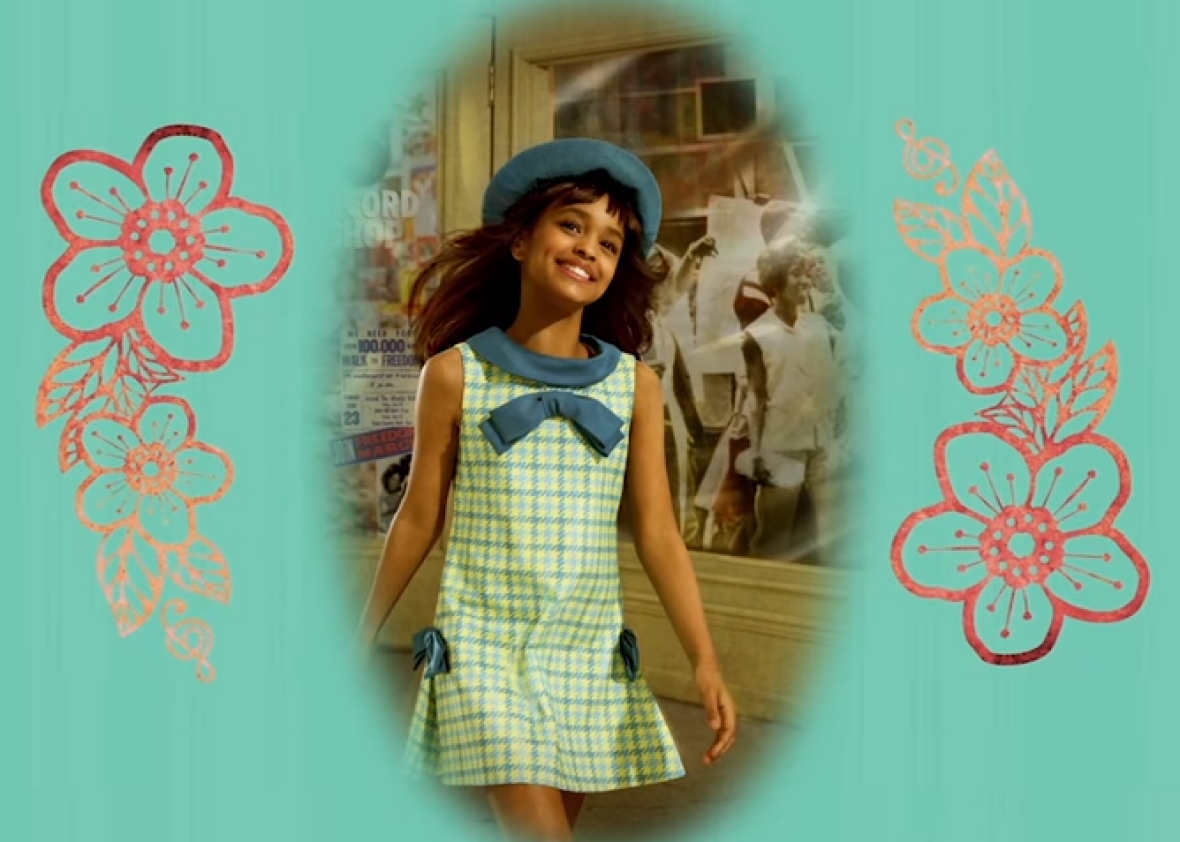American Girl has been teaching girls about their history through the lens of its beautifully made, lavishly accessorized dolls since 1986. Or, at least, it’s been teaching certain girls about their history. For all of the inspiring, fascinating looks into what life was like for white girls growing up, the company has only had two black dolls in its historical “BeForever” doll line—the original, Addy, is a slave who escaped to freedom, and the second, Cécile Rey, was discontinued only three years after her release in 2014. In other words, for most of the time American Girl has been around, its only offering for black girls was to envision themselves as former slaves. However, in 2016, American Girl will add another black character to its roster as part of its 30th anniversary celebration. Meet Melody Ellison, a 9-year-old girl growing up in the Motown scene in mid-1960s Detroit.
That American Girl has managed to go this long without addressing the Civil Rights movement is as baffling as it is telling, but considering the increasingly influential dialogue sparked by the #BlackLivesMatter movement, Melody could not have arrived at a better time. (The doll will hit stores later this summer.) In a video released by American Girl, Denise Lewis Patrick, who penned the two Melody books, emphasized the importance of music for Melody’s character and also divulged that her story will deal at length with Melody’s growing understanding of fairness and equality as larger societal issues.
According to the Detroit News, the Melody doll had a six-person advisory panel working on its development. Included in the panel were late civil rights activist Julian Bond, former Detroit City Councilwoman JoAnn Watson, and Juanita Moore, the president and CEO of the Charles W. Wright Museum.
It’s great that American Girl has finally given one of the most important eras of American history its due attention, but this is just the first step in what needs to be a continued effort to better represent the diversity of American girls’ history. Within their BeForever line, we’ve had 14 dolls to represent white history. To compare, we’re on our third black doll, and there’s only ever been one Hispanic doll (Josefina Montoya), one Native American doll (Kaya), and one Asian doll (Ivy Ling). It’s worth noting that in addition to Cécile, Ivy was also discontinued in 2014—7 years after her release.
Even at a narrative level, there is still work to be done. White dolls’ stories have delved into more obscure territory (e.g. Kirsten Larson, whose narrative represents the struggles of a Swedish immigrant to acclimate to life on the prairie). To represent black life, we’ve had slavery, now the civil rights movement, and (before Cécile was discontinued) the life of a wealthy New Orleans daughter. (Cécile, it’s worth noting, was released in tandem with a white doll, Marie-Grace Gardner, with whom her story was intertwined.) Some of the white dolls have even lacked a clear historical peg, as with 2015’s Maryellen Larkin, whose story takes us to 1954 Florida, where Maryellen is struggling to distinguish herself within a big family. (Just saying, there’s kind of a large Hispanic community within Florida who might have had a more prescient, solid historical peg that occurred only a few years later.)
So it’s great that we’re finally getting around to some crucial parts of American history, but let’s not lose momentum. Black, Latino, Native American, and Asian women have existed throughout American history—not just its landmark struggles. American Girl’s greatest gift to its white audience has always been the way it tells stories about what young girls were up to during the time periods we normally only hear about through the lens of men’s activities. Hopefully, this is one step toward providing a more diverse set of girls that same privilege.
